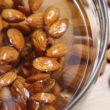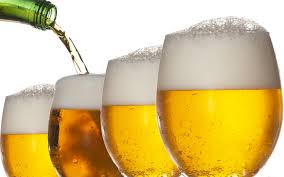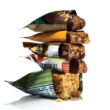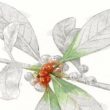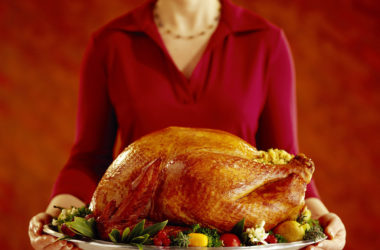The more selection, the bitter. Get it? Hop joke!
It seems unthinkable in today’s world of double and triple IPAs that much of beer’s evolution took place without hops at all. It’s true — for nearly 8,000 years brewers made beer with of a variety of other herbs, spices and plants like Juniper, coriander, spruce and rosemary as preservatives and flavorings agents. This hopless drink is now called Gruit or Grut. Though there aren’t many brewers making beer without hops today, if you’re really interested in finding out what it tastes like, German brewers Professor Fritz Briem make an excellent one called 18th Century Grut Bier.
Our current brew obsession has a lot to do with the wide range of incredible flavors and aromas imparted by different kinds of hops. There’s also a common misconception that all hops are bitter, which is far from true. Hop profiles are incredibly diverse, from the intense tropical and citrus fruits of Citra hops to the white wine and gooseberry flavor imparted by Nelson Sauvin.
Check out 13 other things you probably didn’t know about the best thing to happen to beer since water:
1. These Hops Sure are Pliny
You’ve heard the name in Russian River’s iconic IPA, but who was Pliny and why is he so important to one of the best-rated beers in craft brewing history? Well all those hoppy beers you love? Thank Pliny the Elder himself! He was the first recorded description of hops in his early encyclopedia “Naturalis Historia” published around 80 AD. Interesting to note: If not for his fate via Mount Vesuvius, he might have taught us so much more.
2. Hoppy Beer Comes from France
French monks in Picardy, France were the first to record hops as an ingredient in brewing in 822 AD. This is actually recent compared to the origin of beer, which dates back an astounding 9,000 years. Ever see the word houblon on a label? That’s French for hops.
3. Whew! Those Are Some Skunky Hops
For years I swore Heineken was putting some of that good old green in the bottle along with the hops. I later realized it’s because the green bottle leads to increased exposure to light, which affects the hops and turns the flavor and aroma skunky. Though none of the effects are shared, hops do actually belong to the same family as marijuana, Cannabaceae. You can apparently smoke hops as a sleep aid, but don’t hold us to it.
4. Maxing out the Hop Scale
International Bitterness Units (IBU) is the scale used to measure bitterness. In today’s brewing world, this can mean anywhere from 0-1,000 of IBUs. But even if you do drink a beer with 200 IBUs (bragging rights), you probably won’t be able to tell the difference, as human taste receptors can only pick up a maximum bitterness of 120.
5. In Deutsch We Hop (By the Ton)
Germany was the first country to record hops as a preservative in the 12th century. Even today, Germany outpaces the U.S., clocking in hop production at over 34,000 metric tons per year, while the U.S. stands at just over 27,000. More shocking still: despite its rich brewing history, Belgium actually ranks 20th in hop production, with just over 1,200 metric tons of hops produced.
6. Sleep Well
Sure, drinking too many IPAs will definitely leave you sleeping, but did you know hops themselves were considered a sleep aid? “Hops under your pillow” is an old farmer trick for encouraging a good night’s sleep.
7. Acid Makes Me Hoppy
Alpha acids, one of hops’ three main resin components along with beta acids and essential oils, make all the difference in whether hops are better suited for taste or smell. A lower alpha acid means a hop is better suited for aromatic use, and a higher alpha means it’s better for taste. Some very lucky hops are suited for both, like Japan’s Sorachi Ace or the Pacific Northwest’s Centennial.
8. Waiter, There’s a Hop In My Salad
Crazy as it sounds today, hops were actually eaten by the Romans in a similar manner to asparagus. Too bad the Romans didn’t have Hollandaise.
9. Bine, not Vine
While you may be familiar with grape vines, hops actually grow on a bine. A bine plant differs from a vine because it uses its shoots instead of its tendrils to climb.
10. It’s All About the Ladies
Male hop plants don’t produce any of the essential oils needed to make beer, so commercial hop farms are made up only of female plants.
11. Good For Chicks, Not For Pets
Hops are healthy for chickens’ digestive systems, as they keep harmful bacteria from entering into their intestines. They are not good for dogs or cats, which can cause high fever and even death, so keep your homebrew supplies well out of reach.
12. Originally A Preservative, But Yay For Flavor!
Hops were originally used as a preservative in beer. During the early days of brewing, many plants were introduced on a trial-and-error basis. Brewers realized that beer stayed fresher longer with hops and it became a permanent ingredient. A good example is the more recent use of hops in Russian Imperial Stout, which allowed the dark beer to keep during long voyages to Russia.
13. Ale vs Beer: a Hop War
Once hops crept into beer in 15th and 16th century England, there was a public outcry. Hopped beer was officially defined as “beer” while “ale” was defined as malted barley drink with no hops. While there was never an official ban of hops countrywide, many cities did enforce local bans. Henry VI was purportedly a fan of hopped beer and was instrumental in allowing for it to be brewed and developed into the bottles we covet today.
BY JON KATZ
Image credit: www.hoorayforbeer.co.uk




